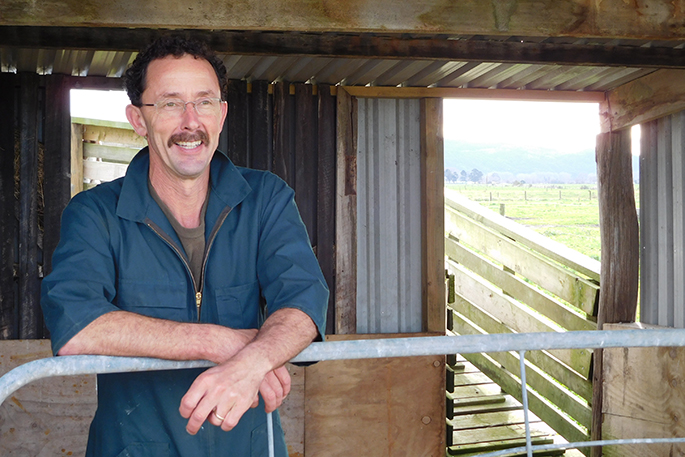Edgecumbe dairy farmer Greg Malcolm has experienced a calving period in his career that could have been very different, had he not had a plan.
Greg, who milks 220 cows on 71ha with wife Jody, says one particular season saw him struck down with cryptosporidium for three weeks in the middle of calving.
“Luckily we had good systems in place, such as a spring rotation planner, so we just found casual staff to come in and get us through that time,” says Greg.
“Things can and do go pear-shaped, so it’s important to not only have a plan, but implement that plan.”
Planned start of calving – known as PSC – was July 7 for the Malcolms, with a “realistic” target of having all cows calved by September 14. This season, Jody is scheduled for surgery during calving, so Greg will be relying on the help of their daughter and a relief milker for around three weeks.
To help the calving season run smoothly, the couple prepares anything they can in advance.
“We get all the calf pens and feeders ready in advance – even in summer if shavings are available,” says Greg. “We also give ourselves a head-start in training the heifers by running them through the milking shed half a dozen times in winter.”
They are also great believers in proactive rather than reactive cow management, to minimise the risk of cows running into calving difficulties or animal health issues.
“During calving we don’t check cows overnight, so we monitor any cows that might be close to calving and evaluate them for any potential difficulties,” says Greg.
“We also ensure stock mineral levels are correct, adding magnesium if required to minimise the chance of milk fever.”
In the past the Malcolms have managed up to five staff during calving, when they were sharemilking 1100 cows in Waimana.
“The key to a smooth calving in terms of staff is really managing stress, so there is no fighting – amongst themselves or with animals,” says Greg.
“We used to give our staff a good four-five day break immediately before calving, and a two-day weekend during calving, to minimise fatigue.
“Keeping an eye on staff to monitor their stress levels is a good idea, as is doing something kind, such as finishing milking for them or leaving snack bags in the cowshed.”
The Malcolms also minimise physical activity wherever possible; their clever bobby pen design means calves walk up a ramp to the loading deck themselves, to eliminate the need for lifting them. They also prefer to pump or gravity-feed milk to calves.
However, the most important aspect to a smooth calving can be the one that goes by the wayside first.
“You need to take care of yourself during calving by eating well and getting enough rest,” says Greg. “Often we [farmers] feed our animals before we feed ourselves.”
As the couple only rears their own calves with their own milk, the threat of Mycoplasma bovis is not imminent; however, they do sell some bull calves so will be observing stricter hygiene and quarantine procedures going forward.
“We won’t be offering calves milk from sick cows and will be limiting the number of people entering the calf pen,” says Greg. “We’ll also be implementing foot and tyre washes for visitors on-farm and require machinery to be clean when entering the property to stop the transfer of soil and weeds.
“M. bovis has been a wake-up call to remind us there are diseases out there that are transferable.”
CALVING TIPS:
- Calve in easy-calving paddocks – avoid those with steep hills, drains or holes.
- Be proactive instead of reactive – monitor cows for potential calving difficulties before they arise; for example, milk fever, etc.
- It’s all well and good having a “plan” – but make sure it is implemented.
- Ensure you take care of yourself by eating and sleeping well during calving.
- Place a bucket in the calving paddock so staff has everything they need at hand to assist a calving cow or treat a downer cow.
- Reduce all unnecessary physical labour; for example, lifting calves, carting milk, if at all possible.
- Try to give staff a good break immediately before calving starts.
- Spread your workload by doing anything you can in advance; for example, preparing calf sheds and feeders, training heifers.
- Try to work one day in advance with other farm tasks, so if you encounter a calving issue you can focus solely on resolving that issue.



0 Comments
Leave a Comment